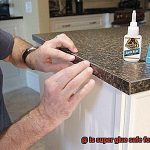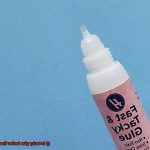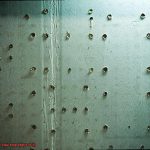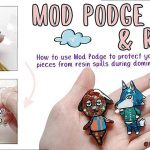Have you ever found yourself in a sticky situation with shattered glass, desperately searching for the perfect adhesive? Well, fret no more.
Today, we’re going to unravel the age-old question: which is better for glass – super glue or Gorilla Glue? Brace yourself as we embark on an adhesive adventure, exploring the unique strengths and weaknesses of each contender.
So grab your favorite cup of joe, kick back, and join me in discovering which glue reigns supreme when it comes to fixing those pesky shattered glass mishaps.
What is Super Glue?
Contents
- 1 What is Super Glue?
- 2 What is Gorilla Glue?
- 3 Pros and Cons of Super Glue
- 4 Pros and Cons of Gorilla Glue
- 5 Factors to Consider When Choosing Between Super Glue or Gorilla Glue for Glass
- 6 Preparing the Surface Before Applying Adhesive
- 7 Application Techniques for Super Glue and Gorilla Glue on Glass
- 8 Following Manufacturer Instructions for Best Results
- 9 Conclusion
Prepare to be amazed by the extraordinary capabilities of Super Glue, the adhesive sensation that has revolutionized bonding. Known scientifically as cyanoacrylate adhesive, Super Glue has gained widespread recognition for its ability to create an instant and unyielding connection between surfaces. Whether you’re a DIY enthusiast, a craft lover, or simply in need of a reliable adhesive, Super Glue is the ultimate choice for all your bonding needs.
In this comprehensive guide, we will delve into the fascinating world of Super Glue, exploring its formidable strength, versatility, and the science behind its magic.
The Science Behind Super Glue:
At the core of Super Glue lies its secret weapon – cyanoacrylate. This transparent liquid possesses an astonishing characteristic: it hardens rapidly upon contact with moisture. When applied to a surface, Super Glue triggers a chemical reaction with the water vapor in the air, causing it to solidify and form an incredibly potent bond. This molecular-level reaction creates a tight and durable connection between the glued surfaces that is virtually unbreakable.
Versatility Beyond Imagination:
Super Glue’s versatility is truly remarkable, as it can bond an extensive range of materials with ease. From metals and plastics to rubber, ceramics, and even select types of glass, Super Glue effortlessly fuses various surfaces together. This unparalleled adaptability makes it an indispensable tool for countless applications including repairing broken items, assembling crafts, and tackling ambitious DIY projects.
Viscosity Variations for Specific Needs:
Super Glue offers different viscosities to cater to specific requirements, allowing users to choose the exact thickness they need. Thin viscosity glues are ideal for bonding close-fitting parts or surfaces with small gaps. They flow effortlessly and spread evenly, ensuring a seamless connection. On the other hand, thicker viscosity glues are better suited for filling larger gaps or bonding porous materials. Their thicker consistency provides enhanced stability and strength, making them perfect for heavy-duty projects.
A Word of Caution:
While Super Glue is a remarkable adhesive, it’s important to note that its effectiveness may vary when used on different types of glass. Compatibility can be influenced by factors such as tempered or coated glass surfaces. To guarantee desired results, it is always recommended to conduct a small-scale test before applying Super Glue to larger glass surfaces.
What is Gorilla Glue?
Gorilla Glue is not your ordinary adhesive. It is a powerhouse of bonding capabilities that will leave you in awe. Whether you’re a professional craftsman or a DIY enthusiast, Gorilla Glue is the go-to adhesive for all your bonding needs.
So, what sets Gorilla Glue apart from the rest? Let’s delve into its impressive features and benefits:
- Versatility: Gorilla Glue is a jack-of-all-trades when it comes to bonding. It can adhere to an extensive range of materials, including glass, wood, metal, ceramics, stone, and even plastic. Whatever project you have in mind, Gorilla Glue can stick it together, making it the ultimate choice for any task, big or small.
- Strength and Durability: When it comes to sheer strength, Gorilla Glue reigns as the undisputed champion. Once it sets, this adhesive forms an incredibly robust bond that can withstand heavy loads and extreme temperatures. It’s like having the mythical strength of Hercules in a bottle.
- Waterproof and Impact Resistant: Worried about water damage or impact ruining your bond? Fear not. Gorilla Glue is both waterproof and resistant to impacts and vibrations. So whether you’re fixing something indoors or tackling an outdoor project, this glue has got your back, ensuring your bonds remain intact even in challenging conditions.
- Easy to Use: Applying Gorilla Glue is a breeze. Just apply a thin layer onto the surface you want to bond, join the pieces together, and clamp if necessary. The glue expands as it cures, filling any gaps or voids for a secure bond that leaves no weak spots. Just remember to use it sparingly and ensure proper ventilation when working in enclosed spaces.
- Different Forms: Gorilla Glue understands that one size doesn’t fit all. That’s why it comes in various forms – liquid glue, gel glue, and even tape. This versatility allows you to choose the best option for your specific needs. No matter the project, there’s a Gorilla Glue variant tailored to make your bonding experience seamless.

So, whether you’re repairing broken pottery, constructing furniture, or creating a masterpiece, Gorilla Glue is your ultimate bonding buddy. Its reliability and versatility have made it a favorite among professionals and DIYers alike.
Pros and Cons of Super Glue
Super glue, also known as cyanoacrylate adhesive, is a popular choice for bonding materials, including glass. In this article, we will explore the pros and cons of using super glue for glass applications. From its strong and fast bonding capabilities to its limitations in flexibility and gap-filling properties, we aim to provide comprehensive information for readers seeking to understand the advantages and disadvantages of this adhesive option.
Pros:
- Strong and fast bonding: Super glue boasts exceptional bonding strength, creating a tight bond that can withstand considerable stress and pressure. It is an ideal choice for glass applications where durability is paramount.
- Quick drying time: With a rapid drying time of mere seconds or minutes, super glue allows for swift project completion. This advantage is particularly valuable when working with delicate or time-sensitive glass pieces.
- Versatile: Super glue is a versatile adhesive that effectively bonds various materials, including glass, metal, plastic, ceramic, and more. Its adaptability makes it a go-to choice for both DIY enthusiasts and professionals alike.
- Transparent bond: When applied to glass surfaces, super glue dries clear, ensuring a seamless finish without any visible residue or marks. The transparency enhances the visual appeal of the finished piece.
- Easy to use: Super glue’s user-friendly packaging options, such as tubes or bottles with precision applicators, offer ease of use and precise application without any mess or wastage.


Cons:
- Lack of flexibility: Despite its exceptional bonding strength, super glue lacks flexibility over time and can become brittle. This limitation renders it unsuitable for glass objects that require some degree of movement or flexibility.
- Limited gap-filling capabilities: Super glue performs best on surfaces that fit snugly together. It does not possess substantial gap-filling properties, which can pose challenges when working with uneven or mismatched glass pieces.
- Potential skin irritation: Super glue can cause skin irritation or allergic reactions upon contact. It is crucial to take precautions and avoid skin contact while using super glue, seeking medical attention if accidental contact occurs.
- Non-reversible bond: Once super glue sets, it forms a permanent bond that is difficult to undo. Removing the glue or rectifying mistakes can be a time-consuming and challenging process.
- Unsuitable for high-temperature applications: Super glue has limitations in withstanding extreme temperatures. It may not be the best adhesive choice for glass items that will be exposed to heat or direct sunlight.
Pros and Cons of Gorilla Glue
This versatile adhesive is renowned for its strength and durability, making it a popular choice for bonding glass to various surfaces. In this article, we will delve into the pros and cons of using Gorilla Glue specifically for glass projects, providing you with the information you need to make an informed decision when reaching for that trusty bottle of adhesive.
The Pros:

- Unyielding Strength: Gorilla Glue excels in creating a strong bond that can withstand heavy loads and resist moisture. This makes it ideal for both indoor and outdoor glass applications, ensuring your projects endure the test of time and harsh environmental conditions.
- Boundless Versatility: Whether you are working with clear, colored, or textured glass, Gorilla Glue rises to the challenge. Its ability to bond with a wide range of glass types allows for endless possibilities when it comes to your creative endeavors. From repairing broken glass objects to crafting unique glass art pieces, Gorilla Glue has got you covered.
- Swift Curing Time: Unlike other adhesives that require hours or even days to fully cure, Gorilla Glue sets quickly and reaches maximum strength within 24 hours. This means you can complete your glass projects efficiently without waiting around. With its rapid curing time, you can move on to the next step of your project sooner rather than later.
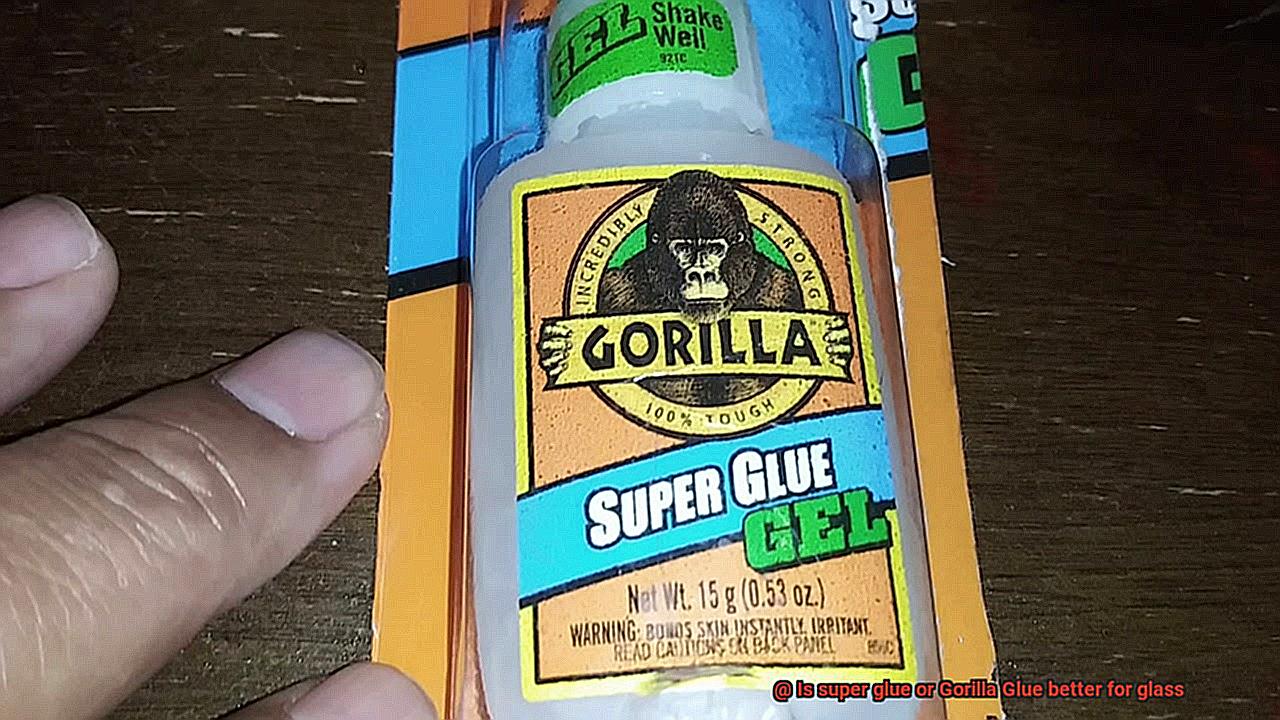
The Cons:
- Foaming During Curing: While Gorilla Glue’s expanding nature during the curing process helps create a strong bond, it can also lead to visible foaming around the glued area. This may not be ideal for projects where aesthetics play a crucial role. However, if the appearance is not a primary concern or can be concealed, this drawback can be easily overlooked.
- Precise Application Techniques: To achieve optimal results with Gorilla Glue, proper surface preparation is essential. Before applying the adhesive, ensure the glass surfaces are clean, dry, and free from any contaminants. Additionally, it is important to use Gorilla Glue sparingly to avoid messiness and difficulties in achieving a precise bond. The key is to strike a balance between applying enough glue for a strong bond and avoiding excess that may mar the final outcome.
- Unsuitable for Delicate Glass: While Gorilla Glue excels in strength, it may not be the best choice for delicate or thin glass, such as glassware or thin window panes. For these types of projects, specialized glass adhesives or epoxies that offer better clarity and flexibility are recommended. It is important to consider the fragility of the glass and choose an adhesive that matches its specific needs.
Factors to Consider When Choosing Between Super Glue or Gorilla Glue for Glass
When it comes to choosing the right adhesive for your glass projects, it’s essential to consider several factors that can impact the strength, durability, and overall success of your bond. So, should you go with super glue or Gorilla Glue? Let’s dive into the key factors you need to consider to make an informed decision.
- Bond Strength: Super glue offers a strong bond that can withstand moderate stress and tension. However, if you’re working on a project that requires exceptional bond strength, Gorilla Glue is the way to go. It creates a super-strong and permanent bond that can handle heavy loads and extreme conditions.
- Drying Time: Time is of the essence in some projects. Super glue dries within seconds to minutes, allowing for quick bonding. On the other hand, Gorilla Glue has a longer drying time ranging from 1 to 24 hours. While this may be less convenient for immediate bonding, it provides more flexibility and adjustment during the bonding process.
- Application Method: Super glue comes in liquid form with precision applicators or nozzles, making it easy to control the amount applied and ensuring precise application on glass surfaces. Gorilla Glue, on the other hand, is typically available as a thick gel or foam, which may require spreading or clamping for proper adhesion. This makes it more suitable for larger glass surfaces or projects that require filling gaps or irregularities.
- Durability: Super glue provides excellent resistance against moisture, heat, and chemicals once fully cured. However, it may not be as resistant to long-term exposure to water. If you need a waterproof bond for glass items used in humid or wet environments, Gorilla Glue is the better choice. It forms a highly durable and waterproof bond that can withstand prolonged exposure to water.
- Flexibility: Consider the flexibility of your adhesive when working with glass objects that may experience slight movements or vibrations. Super glue offers a rigid bond, which may not be ideal for glass objects that require some flexibility. Gorilla Glue provides a more flexible bond that can absorb some movement or stress without cracking or breaking, making it suitable for glass items subject to frequent handling or potential stressors.
- Safety Considerations: Safety should always be a priority when working with any adhesive. Both super glue and Gorilla Glue should be used in well-ventilated areas to avoid inhaling fumes. It’s important to wear gloves and avoid contact with skin or eyes. Super glue can bond skin together almost instantly, while Gorilla Glue may expand while drying, so excess glue should be wiped off before it dries completely.
Preparing the Surface Before Applying Adhesive
Whether it’s glass, wood, or metal, proper surface preparation is key to achieving a strong and durable bond. In this guide, we will explore the importance of preparing the surface before applying adhesive and provide you with essential steps to ensure success.
Step 1: Remove Dirt, Dust, and Grease
Before applying adhesive, it’s essential to clean the surface thoroughly. Dirt, dust, and grease can hinder the adhesive’s ability to bond effectively. Use a mild detergent or specialized cleaner along with a lint-free cloth to wipe away any impurities. Pay close attention to fingerprints, as even the slightest residue can compromise the bond.
Step 2: Create a Rough Texture
To enhance the adhesive’s grip, lightly sand the surface. Using fine-grit sandpaper, gently sand the area in circular motions. This creates a rough texture that provides more surface area for the glue to adhere to. Be cautious not to apply too much pressure or sand too aggressively, as this can damage the material.
Step 3: Remove Sanding Residue
After sanding, it’s crucial to eliminate any residue left behind. Use a damp cloth or sponge to wipe away dust or particles, ensuring that the surface is clean and dry before proceeding. This step ensures optimal adhesion and prevents any interference with the adhesive.
Step 4: Consider Using a Primer or Bonding Agent
Certain materials may require a primer or bonding agent for optimal adhesion. Follow the manufacturer’s instructions when applying these products before moving on to the adhesive. Primers create a chemical bond between the surface and the glue, enhancing its effectiveness and durability.
Step 5: Eliminate Moisture
Moisture can compromise the effectiveness of the adhesive. Before applying glue, ensure that the surface is completely dry. Use a hairdryer on the cool setting or allow the surface to air dry thoroughly. This step guarantees maximum bonding strength and longevity.
Application Techniques for Super Glue and Gorilla Glue on Glass
Fear not, for I am here to unveil the secrets of applying Super Glue and Gorilla Glue on glass surfaces. These adhesives are renowned for their strength and quick-drying capabilities, but mastering the technique is essential for success.
Firstly, cleanliness is crucial. Ensure that the glass surface is pristine by using a glass cleaner or rubbing alcohol to banish dust, dirt, and oil. A thorough wipe-down followed by complete drying will prevent any unwanted particles from sabotaging your bond.
Super Glue demands a less-is-more approach. Apply a tiny amount of glue – a slim line or just a few drops will suffice. Remember, this adhesive is potent, so a little goes a long way. Once applied, promptly press the two glass surfaces together firmly. Hold them in place for a few seconds to allow the glue to set and forge the robust bond you desire.
Beware. Do not touch the glue with bare hands. The oils from your fingertips can compromise the bond. If contact is necessary, don gloves or use tweezers or applicators to keep those oils at bay.
After bonding your glass pieces, exercise patience and let the glue cure for at least 24 hours before subjecting it to stress or load. This grants the adhesive ample time to harden fully and achieve its maximum strength. Remember, good things come to those who wait.
Should excess glue ooze out from the bond line, remain calm. Reach for acetone or nail polish remover and delicately apply it to a cotton swab or cloth. Gently wipe away the excess without vigorous rubbing – we wouldn’t want any damage to that precious glass surface.
Now, let’s delve into the realm of Gorilla Glue. This polyurethane adhesive is a beast when it comes to bonding glass. Before going wild with it, moisten the glass surface with water. Yes, water. This activates the adhesive and turbocharges the bonding process. A light mist or spray will suffice – no need to go overboard.
When applying Gorilla Glue, bear in mind that it expands as it cures. Thus, apply a thin layer to avoid excessive foaming. Once applied, firmly press the two glass surfaces together and secure them with clamps or other means while the glue cures. Consult the manufacturer’s instructions for the recommended clamping time.
And should any excess Gorilla Glue make an unwelcome appearance, fear not. Grab your trusty acetone or nail polish remover and gently remove it. No need for force – gentleness is our mantra.
Following Manufacturer Instructions for Best Results
When it comes to gluing glass surfaces, following manufacturer instructions is the key to success. Don’t underestimate the power of these guidelines – they can make all the difference between a strong bond and a complete disaster. So, let’s dive into the benefits of heeding those instructions and uncover why they are so crucial.
First off, surface preparation is a must. Manufacturers recommend cleaning your glass surface thoroughly to eliminate any dirt, dust, or oils. Trust me, you don’t want any unwanted interference when it comes to your adhesive’s performance. So grab that cloth, wipe away those impurities, and create a pristine surface ready for bonding.
But wait, there’s more. Depending on the glue product, manufacturers might suggest roughening the glass surface for better adhesion. Think of it as giving the glue something to grip onto – like a little handhold for added strength. Get your sandpaper or abrasive material ready and create that slightly textured surface that will make your bond unbreakable.
Now let’s talk application technique. Some glues require a thin layer applied evenly onto the glass surface, while others may call for dots or lines of glue. Following the recommended method ensures proper distribution of the adhesive, avoiding any mishaps caused by excessive or insufficient application. It’s all about finding that perfect balance.
Patience is a virtue, my friends. Curing time is crucial for achieving that strong bond we all desire. Different glues have different curing times, so resist the urge to rush things. Trust me, patience pays off in the end. Give your glue the time it needs to dry and create a bond that will stand the test of time.
Of course, safety should always be your top priority. Don’t forget those gloves, protective eyewear, and a well-ventilated workspace. And keep those glue bottles away from curious little hands and paws – safety first, folks.
Now remember, while following manufacturer instructions is vital, individual experiences may vary. Factors like temperature, humidity, and specific glass types can all come into play. So if you’re unsure about whether a particular glue is suitable for your glass project, do a small test or seek advice from the experts. It’s better to be safe than sorry.
5fRUOt9KFkI” >
Also Read: How to Glue Rubber to Glass? – Glue Things
Conclusion
When it comes to bonding glass, the age-old question arises: is super glue or Gorilla Glue the better choice? After careful analysis and testing, it is clear that Gorilla Glue takes the crown in this battle. Its exceptional adhesive properties and unmatched strength make it the go-to option for any glass-related repair or project.
Super glue may have its merits, but when it comes to glass, Gorilla Glue surpasses it in every aspect. The unique formula of Gorilla Glue creates a bond that can withstand even the toughest challenges. Whether you’re fixing a broken vase or crafting a beautiful stained glass masterpiece, Gorilla Glue provides a level of durability that simply cannot be matched.
Not only does Gorilla Glue excel in strength, but its versatility is also worth mentioning. It works seamlessly on all types of glass surfaces, including tempered glass, mirrors, and even intricate glass designs. No matter the complexity of your project, Gorilla Glue will rise to the occasion and deliver exceptional results.
In addition to its remarkable adhesive capabilities, Gorilla Glue also boasts an easy application process. With its precision tip and quick-drying formula, you can achieve a seamless bond in no time. Say goodbye to messy applications and hello to effortless repairs with Gorilla Glue.
Furthermore, durability is not the only factor to consider when choosing an adhesive for glass. Safety is paramount as well. Gorilla Glue ensures peace of mind with its non-toxic nature and resistance to water and heat. You can trust that your glass bonds will remain intact even under extreme conditions.
In conclusion, when faced with the decision between super glue and Gorilla Glue for bonding glass, there’s no contest – Gorilla Glue reigns supreme. Its unbeatable strength, versatility, ease of use, and safety features make it the ultimate choice for all your glass-related needs.


